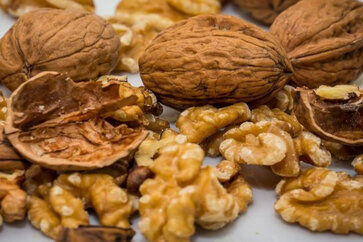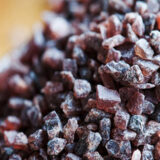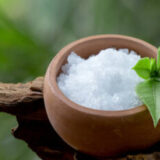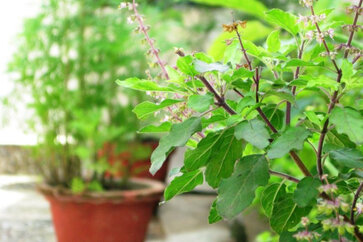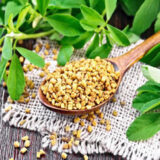Gorakhmundi । 15 Health Benefits And Use Of Churna,Tree, Ark
Gorakhmundi is also known as “Mundi” in Hindi. It is a flowering plant belonging to the family of the genus Sphaeranthus. In Sanskrit, it is recognized by many names like “Tapaswini”, “Mahamundi Aruna”, “Nilak Dambika”, etc.
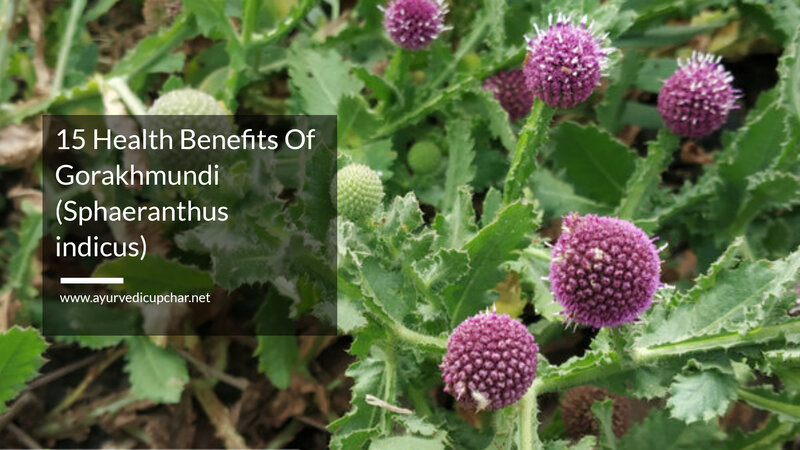
Scientifically Gorakhmundi is called Sphaeranthus indicus Linn. and in English, it is known as “East Indian globe thistle.” Gorakhmundi is an aromatic herb that is found throughout India, but in southern India, it is found in abundance.
Gorakhmundi generally starts growing at the end of the rainy season and in the winter season, it takes flowers and fruits. It can also be found in unused dry paddy fields in summer. Gorakhmundi is an herb that has a number of medicinal properties.
It had been an important herb that has been used to treat many diseases in Ayurveda and Unani medicine systems. The whole parts of the plant Mundi such as roots, flowers, and leaves are beneficial for many diseases.
It is traditionally used for TB, indigestion, madness, chest burning, vomiting, diarrhea, asthma, epilepsy, leprosy, helminthiasis, stomach insects, fever, hernia, poison disorders, diabetes, etc.
Gorakhmundi Common (Indian) Names
- Sanskrit: mahamundi, mundi, hapus
- Hindi, Bengali, Marathi & Gujerati: mundi, gorkhmundi
- Telugu: boddatarupa, boddasoramu
- Tamil: kottak aranthai
- Malyali: mirangani
- Riya: murisa, bokashungi
- Punjabi: ghundi, khamadrus
- Santal: belaunja
- Undari: mundi
Medicinal uses of Gorakhmundi in Ayurveda
According to Ayurveda, every part of the Gorakhmundi plant possesses medicinal properties and can be utilized to address various health conditions. It is employed in the treatment of jaundice, hemicranias (migraine headaches), cough, leucoderma (skin pigmentation disorder), hepatopathy (liver diseases), hernia, gastropathy (stomach disorders), and urinary discharges.
Furthermore, Gorakhmundi is also employed for indigestion, helminthiasis (parasitic worm infections), asthma, breast engorgement, dysentery, hemorrhoids, spleen diseases, uterine and vaginal pain, rectal pain, vomiting, skin diseases, dyspepsia (indigestion).
When used externally, Gorakhmundi plant pastes are applied to treat conditions such as edema (swelling), pruritus (itching), filariasis (a parasitic infection), arthritis, gout, and cervical adenopathy (enlarged lymph nodes in the neck). In the Unani medicine system, Gorakhmundi is utilized as a laxative, tonic, and emmenagogue (promoting menstrual discharge), as well as stimulating appetite.
Moreover, it is employed to reduce inflammation, improve blood quality, cool the brain, enhance eye luster, treat jaundice, and alleviate sore eyes, urinary disorders, boils, biliousness, ringworm, scabies, and various other conditions.
Ayurveda Properties
Ayurveda recognizes Gorakhmundi as having several properties based on its traditional use and characteristics. Some of the Ayurvedic properties attributed to Gorakhmundi include:
1. Tikta Rasa (Bitter Taste): Gorakhmundi is believed to have a bitter taste, which is associated with its potential to balance Kapha and Pitta doshas (energetic forces) in the body.
2. Kashaya Rasa (Astringent Taste): The herb is also considered to possess an astringent taste, which is believed to help in toning and drying tissues.
3. Sheeta Virya (Cooling Potency): Gorakhmundi is described as having a cooling effect on the body, which is associated with its ability to pacify excess heat and inflammation.
4. Deepana (Digestive Stimulant): It is believed that Gorakhmundi can help stimulate digestive fire, promoting healthy digestion and alleviating indigestion.
5. Pitta and Kapha Dosha Balancing: The herb is thought to possess properties that can balance both Pitta and Kapha doshas, making it useful for conditions associated with these doshas’ imbalances.
6. Medhya (Brain Tonic): Gorakhmundi is considered to have potential benefits for brain health and cognitive functions, supporting mental clarity and focus.
7. Raktashodhana (Blood Purifier): It is believed that Gorakhmundi possesses properties that can help purify the blood, eliminating toxins and supporting overall blood health.
It’s important to note that while these properties are commonly associated with Gorakhmundi in Ayurveda, scientific research is limited, and individual experiences may vary.
It is always recommended to consult with a qualified healthcare professional or Ayurvedic practitioner before using Gorakhmundi or any other herb for therapeutic purposes.
Useful Parts
- Root
- Bark
- leaves
- Flowers
- Seeds
Decoction
Dosage: 1 teaspoonful (3 to 6 g) per day, with plain water, after meals.
Mundi Booti Benefits
1. Gallstones
Gorakhmundi is an incredibly beneficial remedy for various uterine conditions and ailments related to the vagina, including cases unrelated to stones and gallstones.
2. Mundi booti benefits for eyes
It has been used as the tribal folk remedy for various disorders of ENT (Ear, Nose & Throat Disorders) and ophthalmology. Consumption over a period of time can boost eyesight. Take 3-4 fresh flowers of Gorakhmundi and pound them with two teaspoons of sesame oil. Regular consumption will help to make your eyesight better and also free from red eyes.
3. Naru Disease (Guinea Worm Disease)
Grind the leaves of Gorakhmundi and plaster at the infected area (Naru disease) you will find relief and diseases will go within a few days according to the condition. Naru disease is also named Bala Disease; this disease is generally caused by drinking dirty water.
4. Vata disease
Mix Gorakhmundi powder, ghee, and honey and take it in the morning and evening, you will find relief in diseases related to Vata. You can also take powder of Gorakhmundi and Saunth in equal quantities in hot water to remove the pain from common vata.
5. Leprosy
If you have leprosy take the powder of Gorakhmundi, the powder of neem bark, and prepare the decoction, take this decoction in the morning and evening to cure leprosy.
6. Gonorrhea
Consuming the powder of Gorakhmundi is very beneficial for discharge (gonorrhea) and related metallurgical disease-related diseases.
7. Boils or itching
Gorakhmundi is helpful to a woman having pain in the vagina, itching, or boils, grind the seeds of Gorakhmundi take them in equal quantity with sugar, and consume them once a day with cold water.
8. Sexual power
Consuming leaves of Gorakhmundi and its roots with cow’s milk at night can increase sexual power. Regular use of powder can make them stronger.
9. Hemorrhoids
To alleviate hemorrhoids, take Gorakhmundi powder along with honey or whey. Within a few weeks of regular consumption, you should experience relief from hemorrhoid symptoms.
10. Piles
Take the stem and root of Gorakhmundi, dry it, and make a powder. Consume one spoon of powder with whey every day, the piles end completely.
11. Intestinal Parasite Infection
The root of the Gorakhmundi plant is known to be beneficial in treating intestinal parasite infections, providing significant advantages for addressing such conditions.
12. Syphilis
For treating syphilis, follow this procedure: Dry the Gorakhmundi plant and finely grind it. Mix a small amount of water with the powdered plant to create a paste. Apply this paste once a day to the affected area.
13. Bad Breath
To combat bad breath, try the following natural remedy: Take a small amount of Gorakhmundi powder and mix it with vinegar. Consume one pinch of this mixture in the morning and another pinch in the evening.
14. Scabies
Take 2 to the 3-gram powder of Gorakhmundi powder with lukewarm water twice a day. The other way is to drink 1/4 glass of juice of Gorakhmundi twice a day.
15. Ascaris
For the treatment of Ascaris (intestinal worms), consume half a teaspoon of powdered Gorakhmundi root once daily. This remedy aids in the elimination of intestinal worms.

